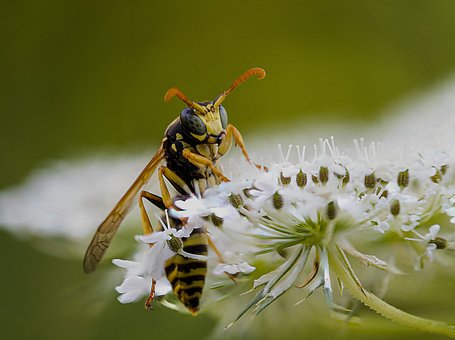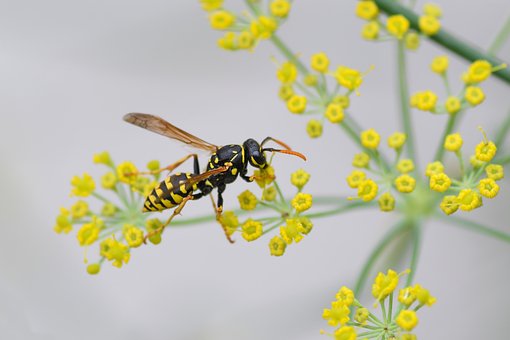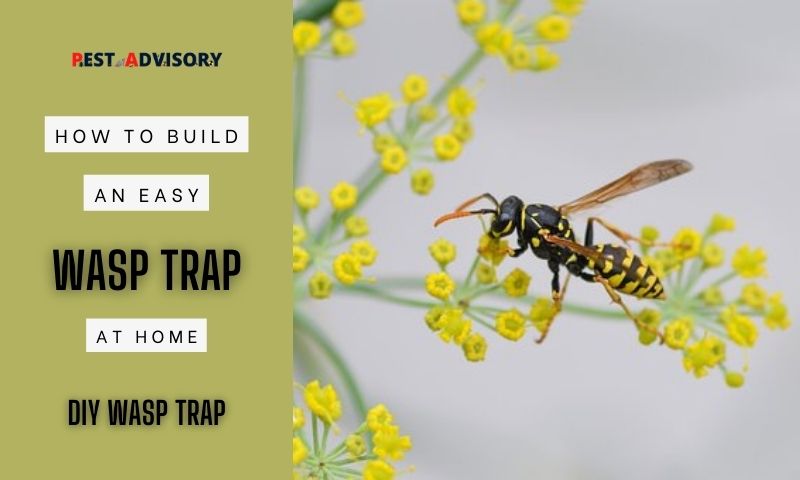Are you tired of being bothered by pesky wasps while enjoying the outdoors? Do you want a simple, cost-effective solution to keep these stingers at bay? Look no further than a DIY wasp trap!
Building your own wasp trap at home is easy, affordable, and an effective way to eliminate these unwelcome guests.
In this article, we’ll guide you step-by-step on how to create your own wasp trap using household items.
Say goodbye to wasps and hello to a peaceful outdoor experience with this easy DIY solution.
Do Homemade Wasp Traps Work?
Homemade wasp traps are an effective way to trap and reduce the population of wasps. By using bait, such as sweet liquids or meat scraps, the traps attract wasps. The addition of dish soap reduces surface tension, making it difficult for wasps to fly away and causing them to drown in the liquid.

How to Make a Wasp Trap at Home?
To make a simple wasp trap at home using a soda/water bottle, you’ll need the following:
Things You’ll Need
- A plastic soda or water bottle
- A sharp knife or scissors
- A sweet bait (e.g., sugar water, fruit juice, or soda)
- A piece of string or twine
- Optional: Tape or glue
Steps to Make a Trap
- Remove the bottle cap and use the knife or scissors to cut off the top one-third of the bottle. Keep the cap aside.
- Invert the top portion of the bottle, so the opening is facing down, and insert it into the bottom portion of the bottle. Ensure that the bottom half is deep enough to hold the bait without it overflowing.
- If the top portion does not fit securely, you can use tape or glue to secure it in place.
- Use the knife or scissors to make two small holes near the top of the bottle. Make sure they are opposite each other.
- Thread the string or twine through the holes and tie a knot at both ends. This string will be used to hang the trap.
- Pour some sweet bait into the bottom portion of the bottle, making sure it doesn’t fill more than a third of the way up.
- Screw the cap back onto the bottle, ensuring that it is tight.
- Hang the trap in a location where you have seen wasp activity, such as near a trash can or outdoor dining area.
- Check the trap regularly and empty it as needed.
Note: Be careful when handling wasp traps, and keep them out of reach of children and pets. Additionally, consider using caution when removing the cap to avoid disturbing any trapped wasps.

Precautions to Take When Using Wasp Trap
A couple of tips can assist you in catching wasps. You can likewise learn not to trap other garden bugs.
1. You need to guarantee no honey bees are attracted to your wasp trap, so add a couple of drops of vinegar to the combination of ingredients.
2. Prevent wasps from escaping away from the trap by rubbing a limited quantity of petroleum jelly around the external and internal edges of the plastic bottle container.
3. Empty the dead wasps regularly. If you don’t clear up the dead wasps, the new ones will be kept aside from drowning.
4. If you dislike the idea of disposing of the dead wasps, you can generally make another new trap.
5. It isn’t important to hang up your wasp trap to attract wasps.
6. Always wear defensive gloves and clothing when working around stinging bugs, particularly when setting up traps.
What is the Best Bait Recipe for a Wasp Trap?
There are several bait recipes that can be used to attract wasps into a trap. Here are three effective options:
Sweet Bait Recipe
Mix together equal parts of water and sugar until the sugar dissolves.
Add a few drops of dish soap to reduce surface tension and prevent the wasps from escaping.
Meat Bait Recipe
Place a small piece of raw meat, such as chicken or fish, inside the trap.
The scent of the meat will attract wasps.
Fruit Bait Recipe
Cut up small pieces of overripe fruit, such as apples, bananas, or peaches, and place them inside the trap.
The sugar in the fruit will attract wasps.
You can experiment with different recipes to see which one works best for you based on the type of wasps in your area and the time of year.

Frequently Asked Questions
What kind of bottle should I use for a DIY wasp trap?
You can use a two-liter soda bottle or a large-liter soda bottle to make a DIY wasp trap. For the two-liter soda bottle, you should cut it just under the neck, where the bottle becomes a straight cylinder.
For the larger soda bottle, cut off the top of the bottle just below where the container broadens and invert the top so the spout is inside the bottle.
You can also reuse and modify empty milk jugs or other similar containers for making wasp traps.
Where should I place my wasp trap to catch the most wasps?
The optimum location for a wasp trap is a quiet, sunny location that has a breeze to carry the scent from the trap.
Hanging the trap about 4 feet high will probably attract and catch more wasps than setting it on the ground.
It is also important to place the trap at least 20 feet from human activity areas. Additionally, you should move the trap as necessary to keep the temperature around 85 degrees F.
On warmer days, hang it in the shade, and on cooler days, hang it in the sun.
How often should I empty my wasp trap?
It’s important to note that regardless of the bait you’re using, you should discard its contents and replace it with fresh bait regularly.
For instance, with the tap trap, you should replace the bait either when there are many captured pests or every three to four weeks for optimal effectiveness.
Cleaning the trap before refilling it with fresh bait is also important to prevent the spread of disease or bacteria.
How effective are homemade wasp traps compared to commercial wasp traps?
Commercial traps are designed with a specific purpose in mind and can be more effective at catching wasps and other stinging insects compared to homemade traps.
However, homemade traps can be just as effective if they are designed and used correctly.
Final Words
Building a wasp trap at home is a simple and effective way to keep wasps at bay.
By using common household items and following a few easy steps, you can create a safe and humane solution for controlling the wasp population in your yard.
While constructing a wasp trap is a simple and humane way to control the wasp population in your yard using everyday items, some people may find it time-consuming or inconvenient.
In that case, making a soapy water spray to get rid of wasps can be a great alternative.
Enjoy a wasp-free summer!
